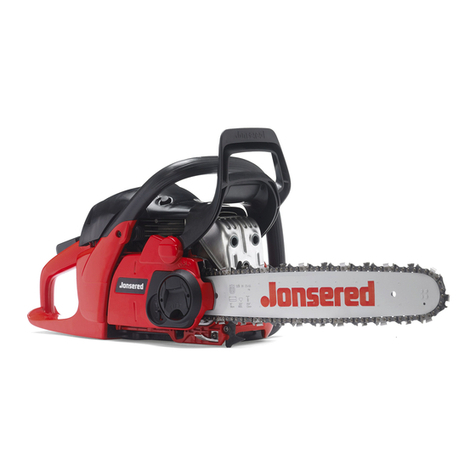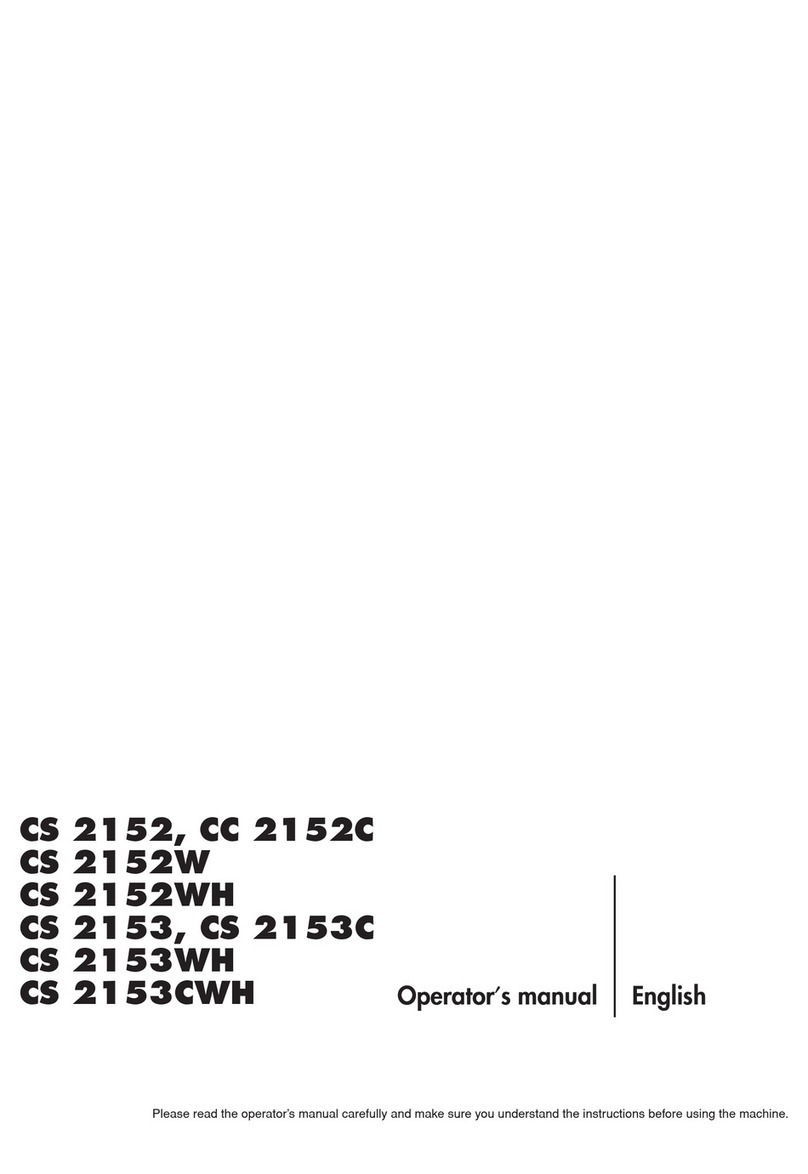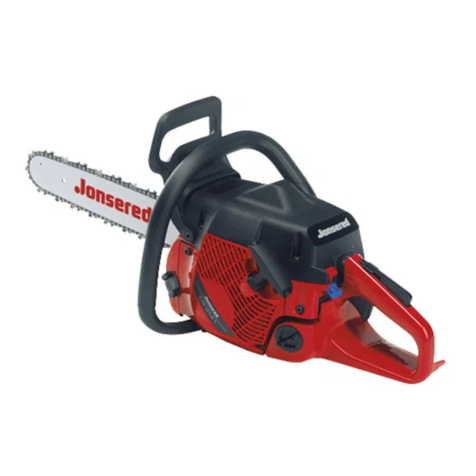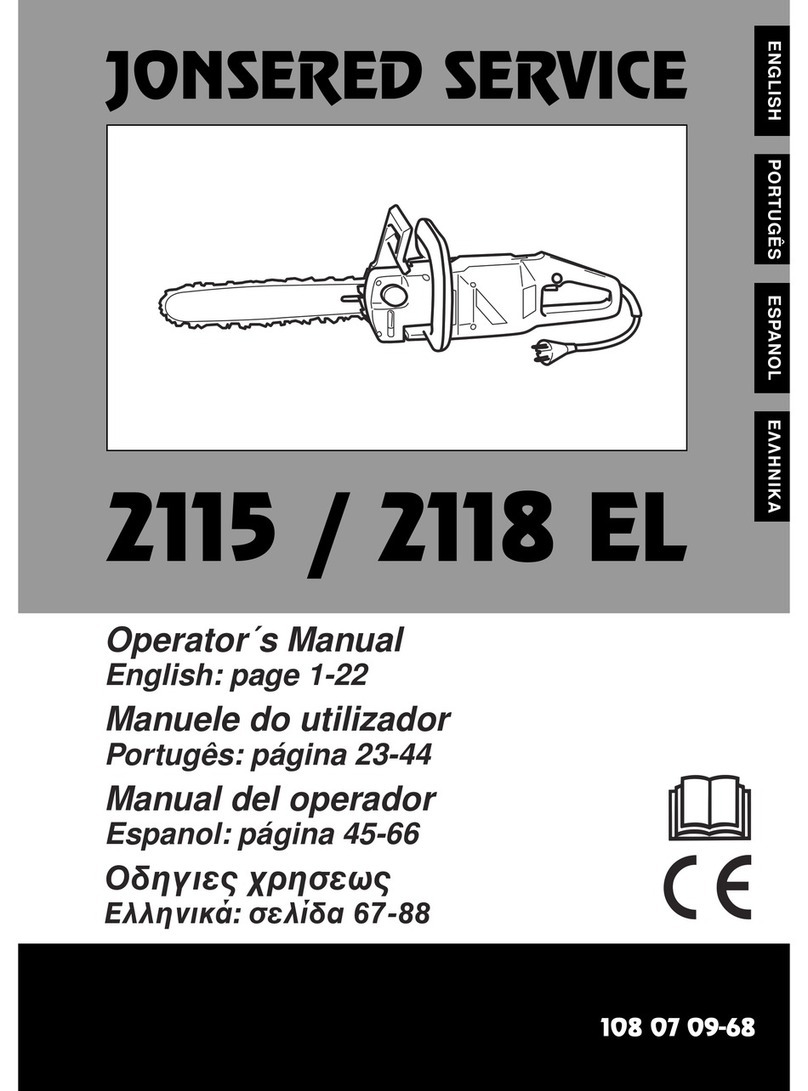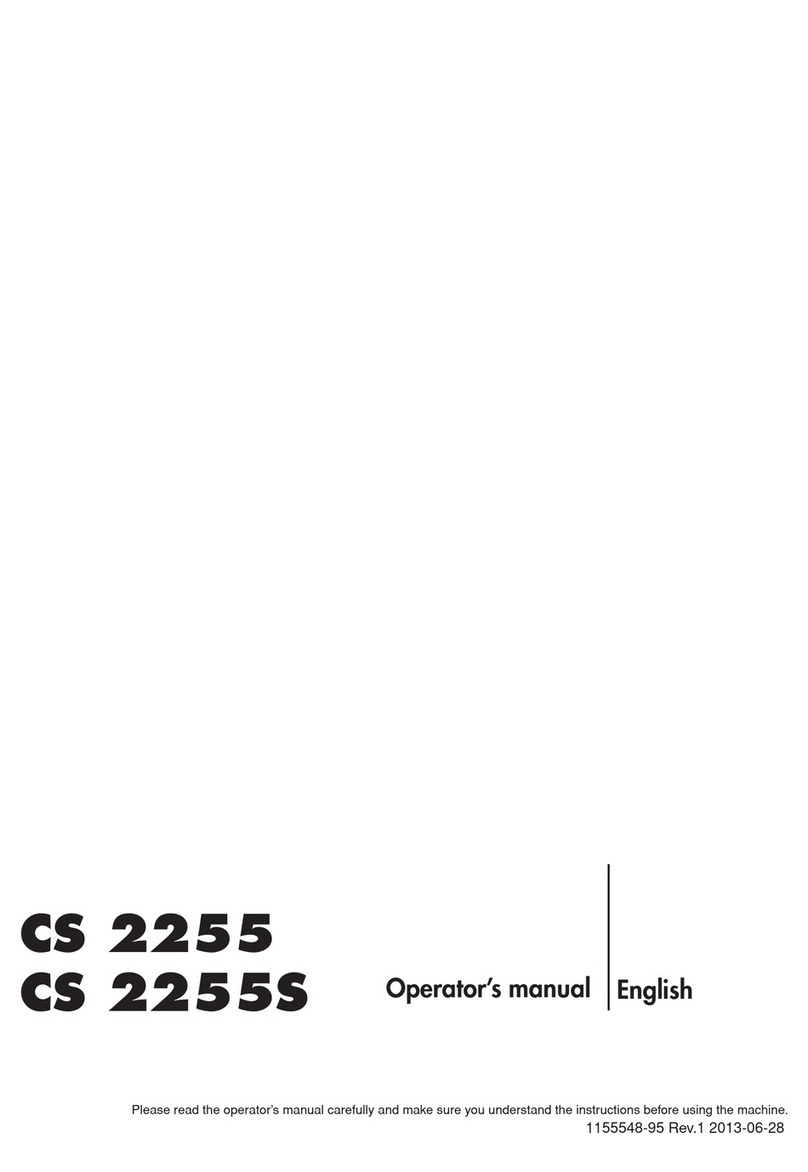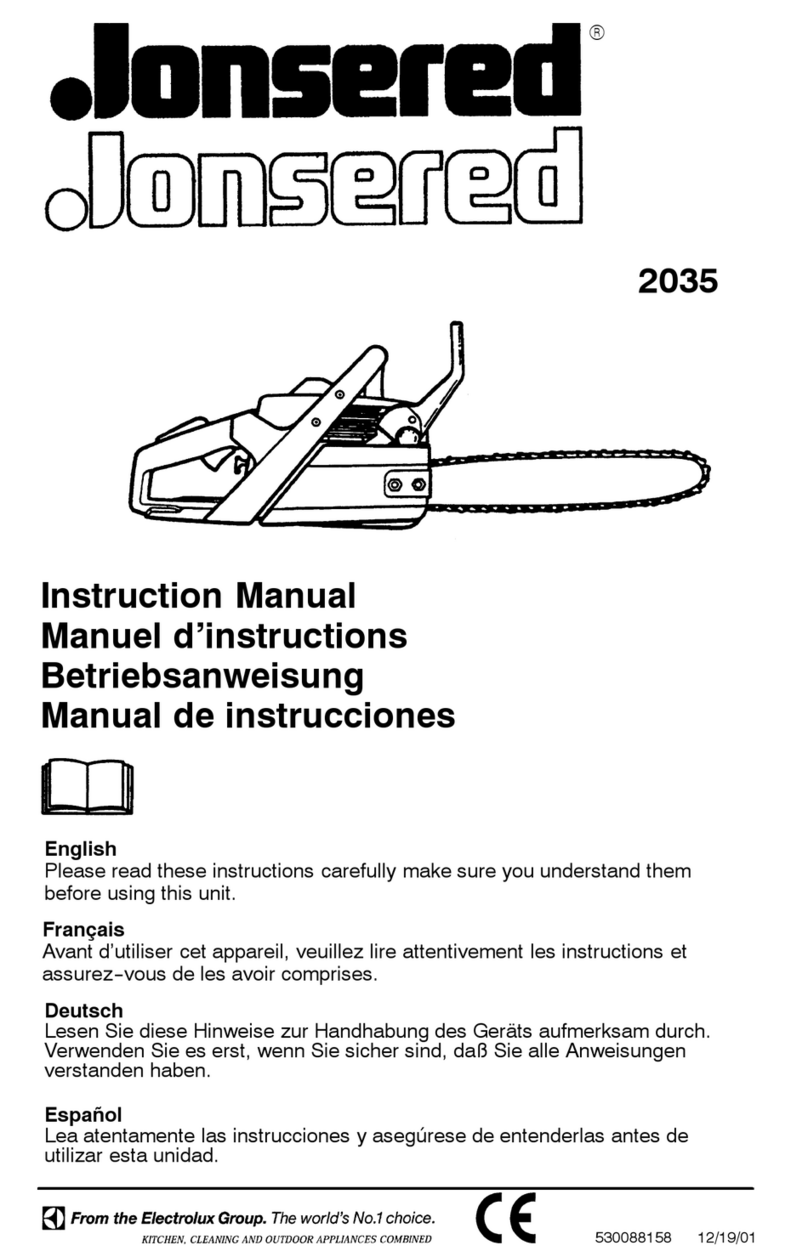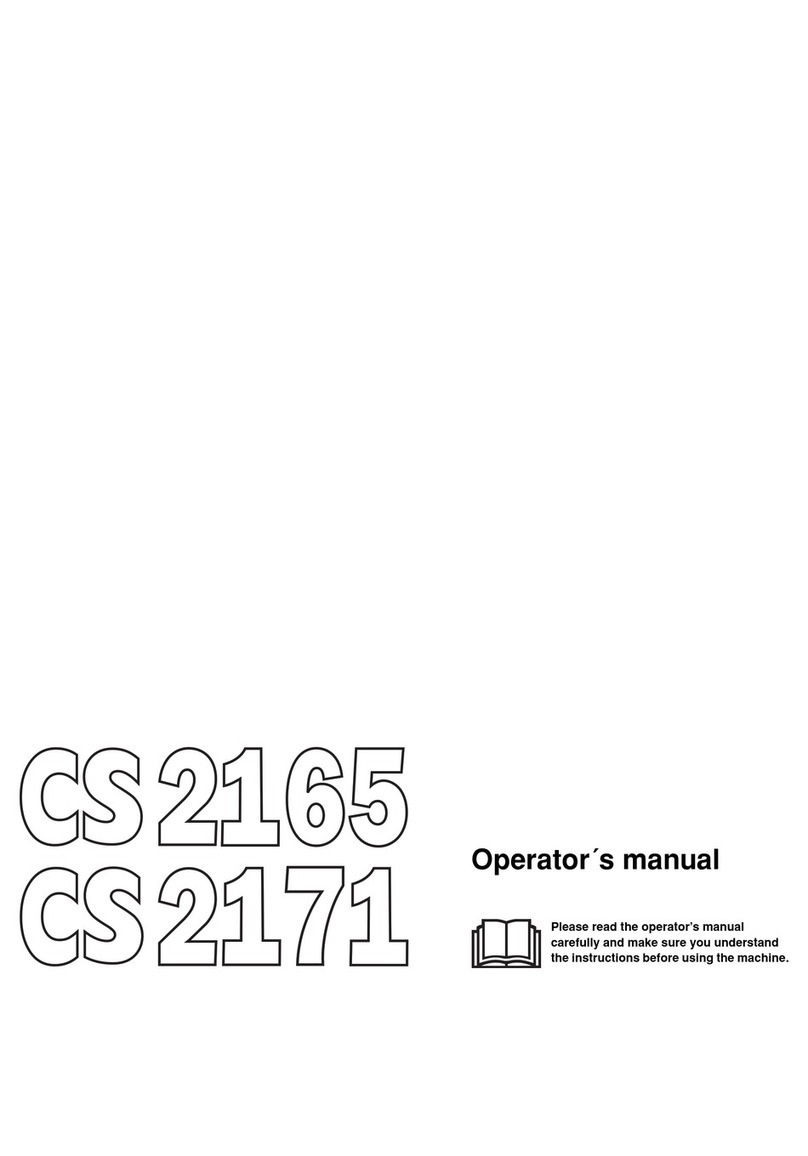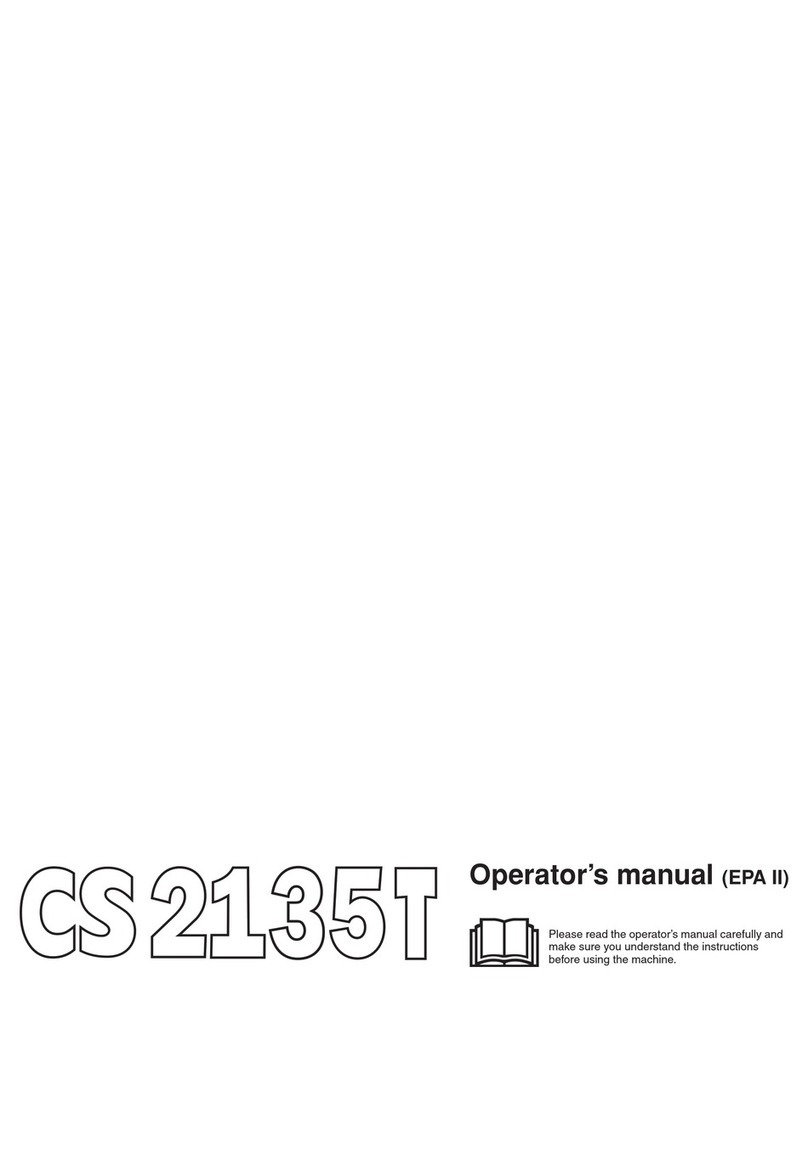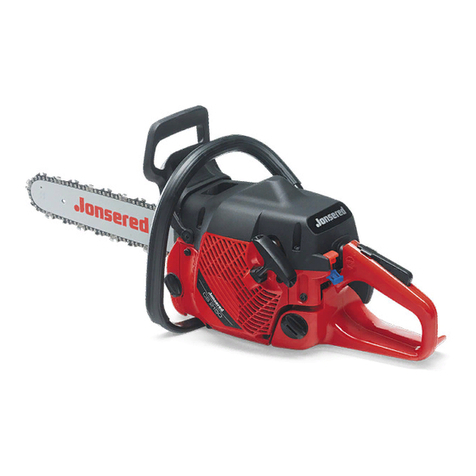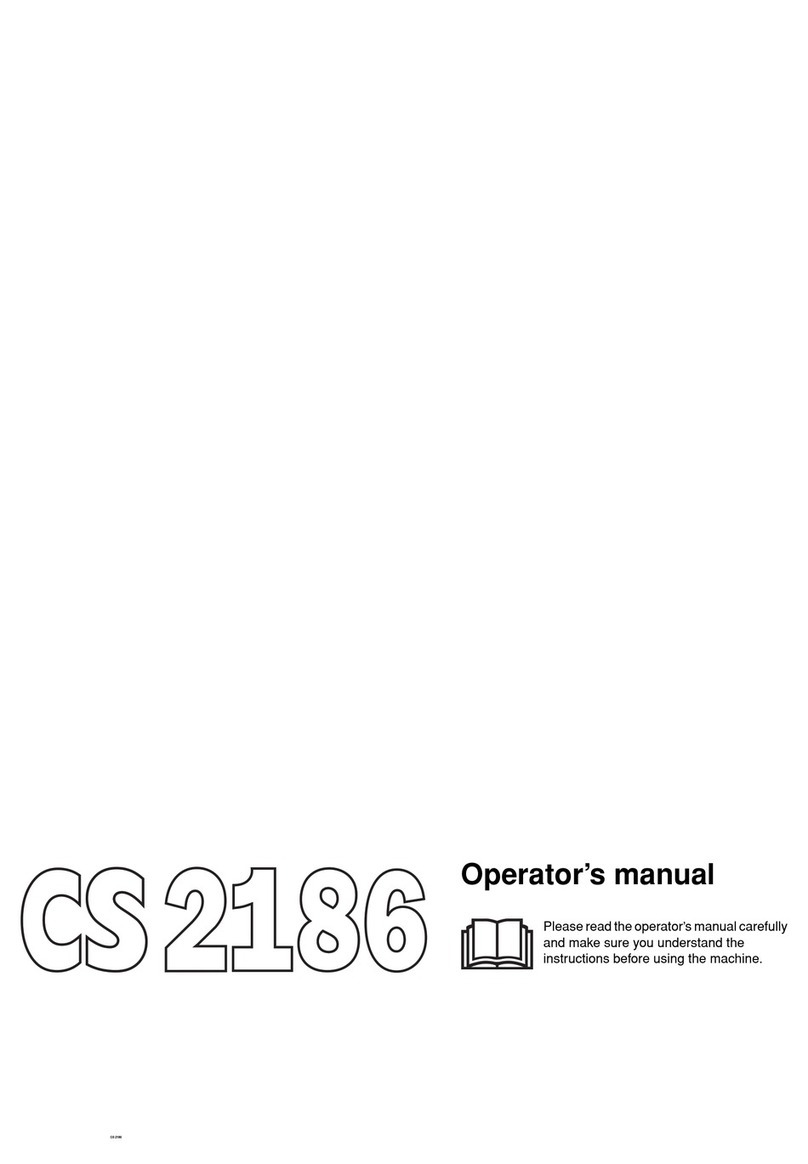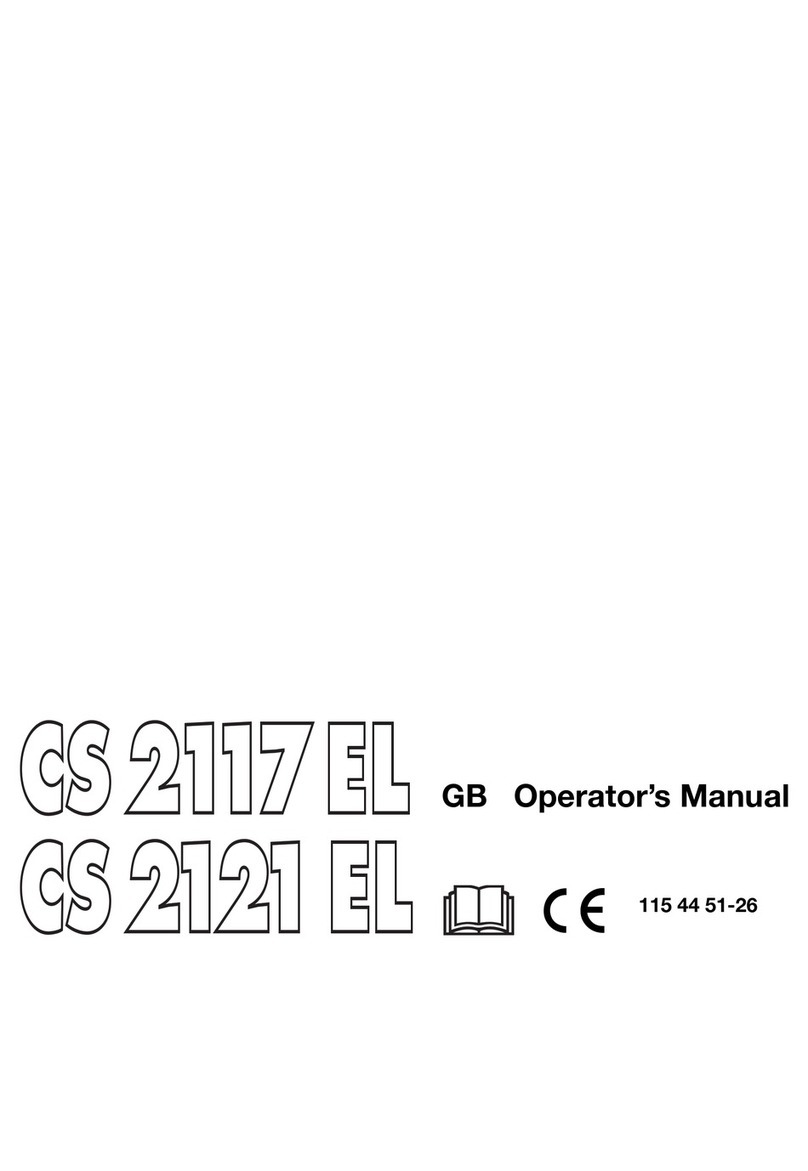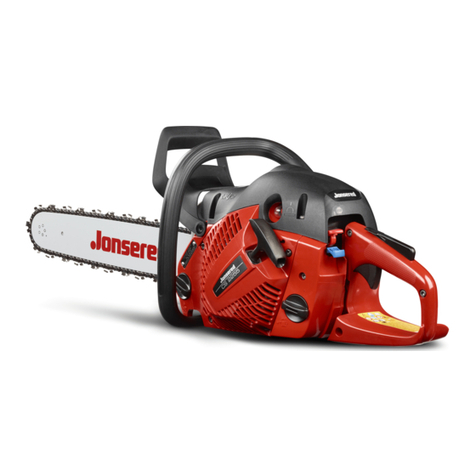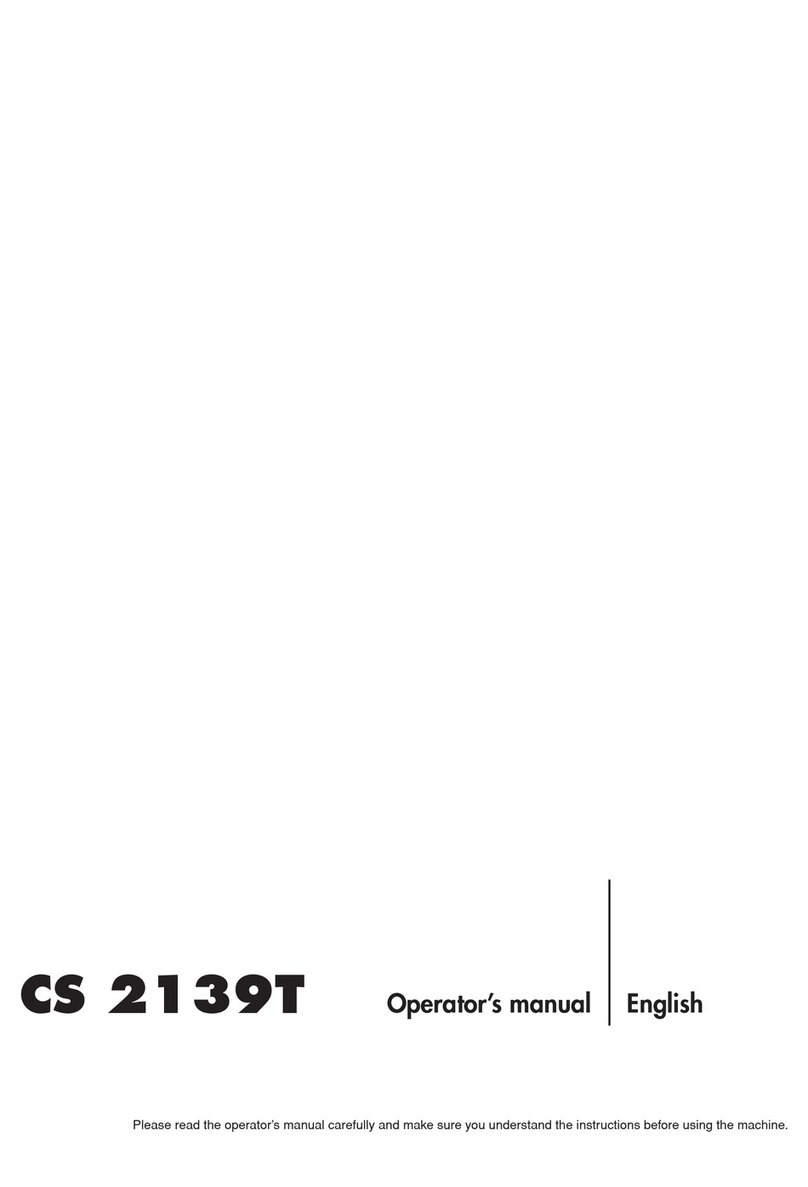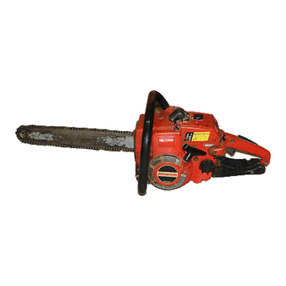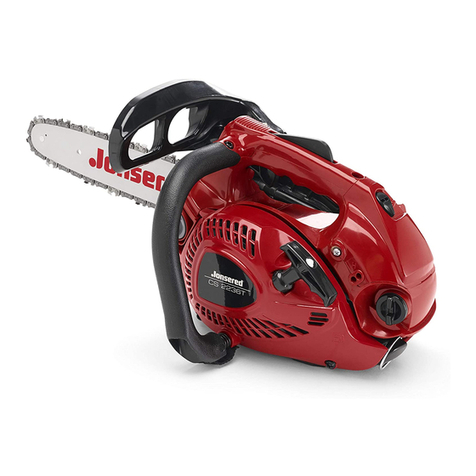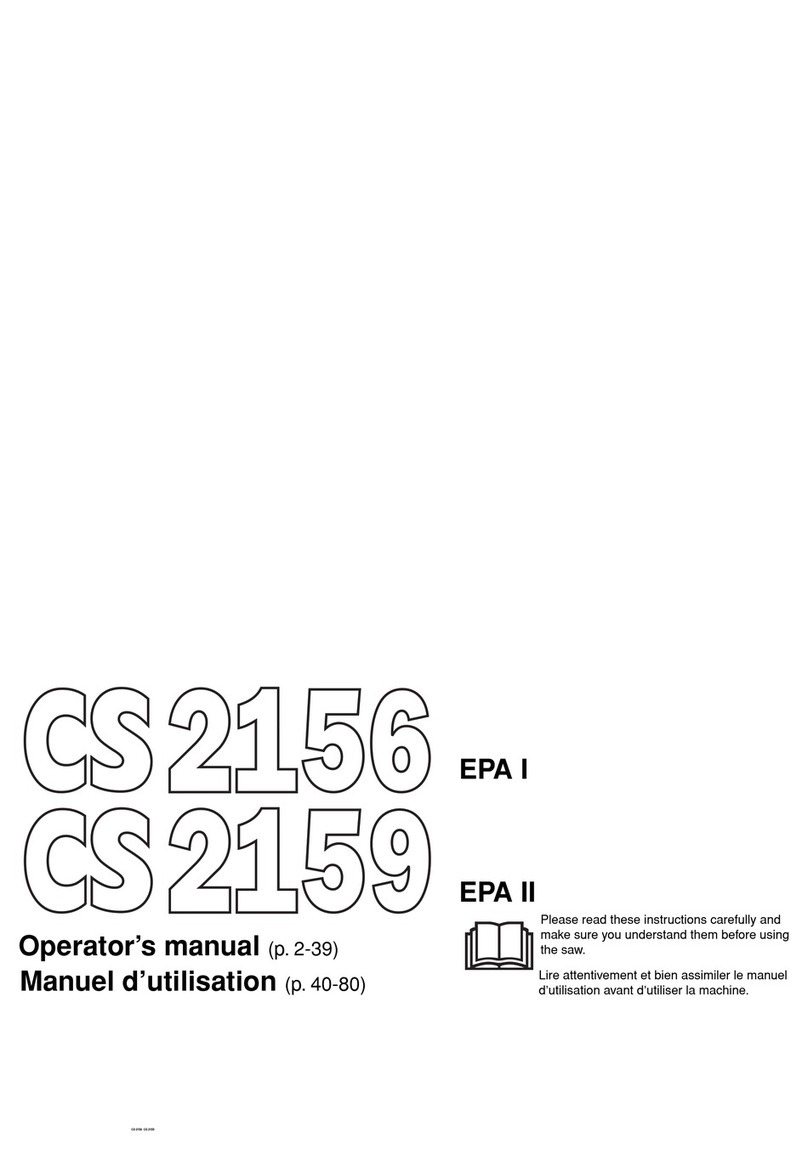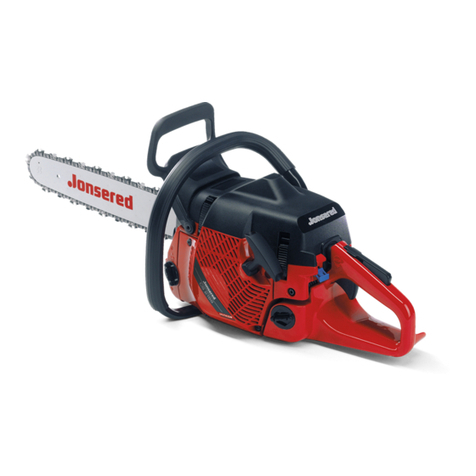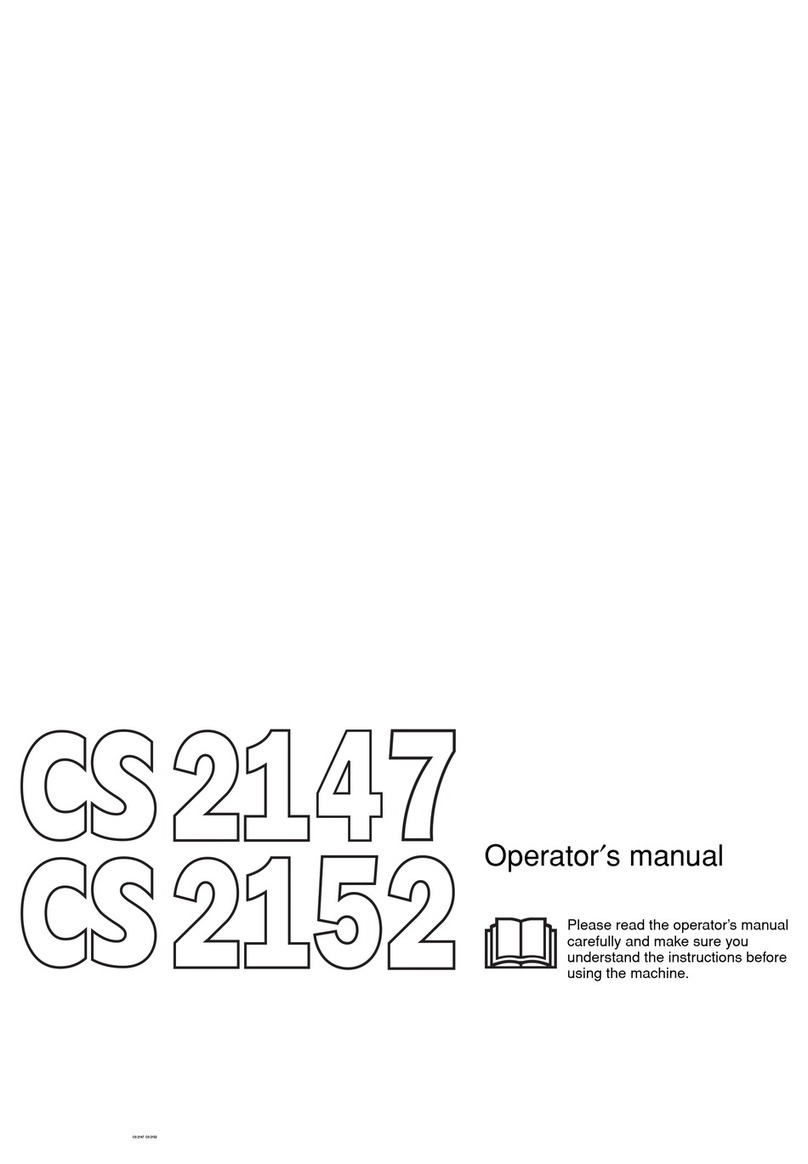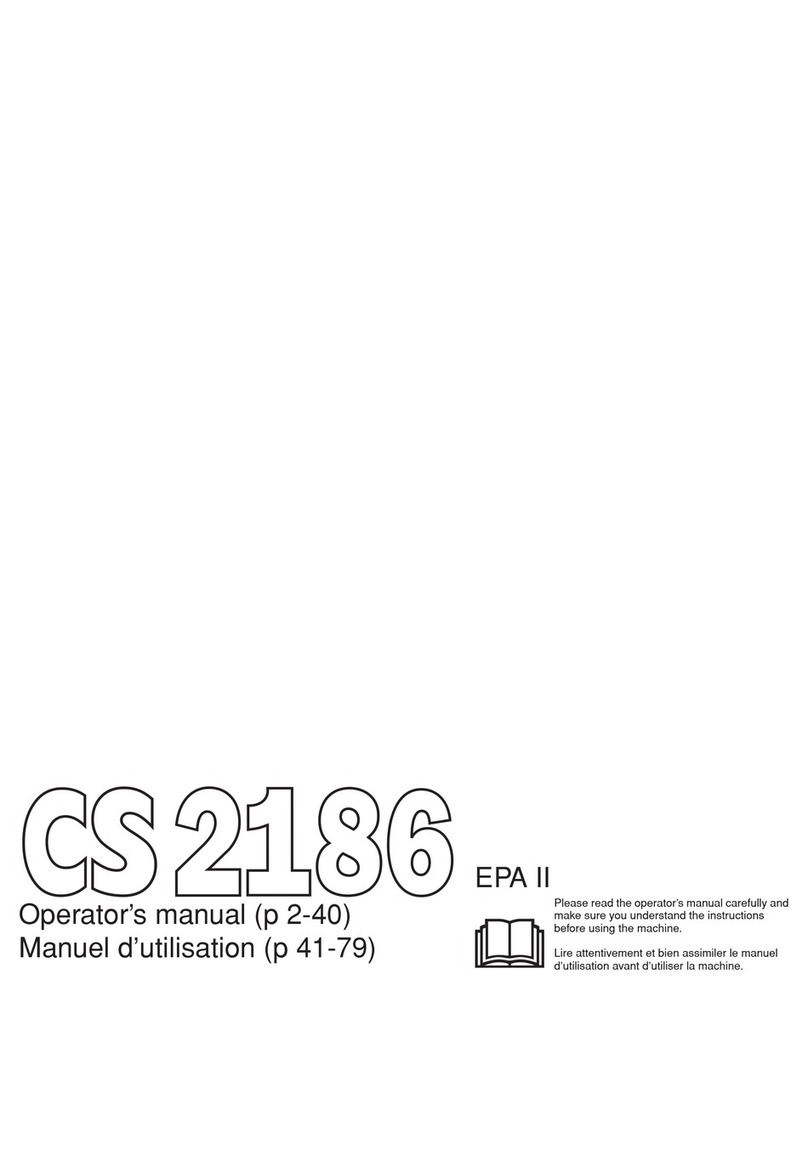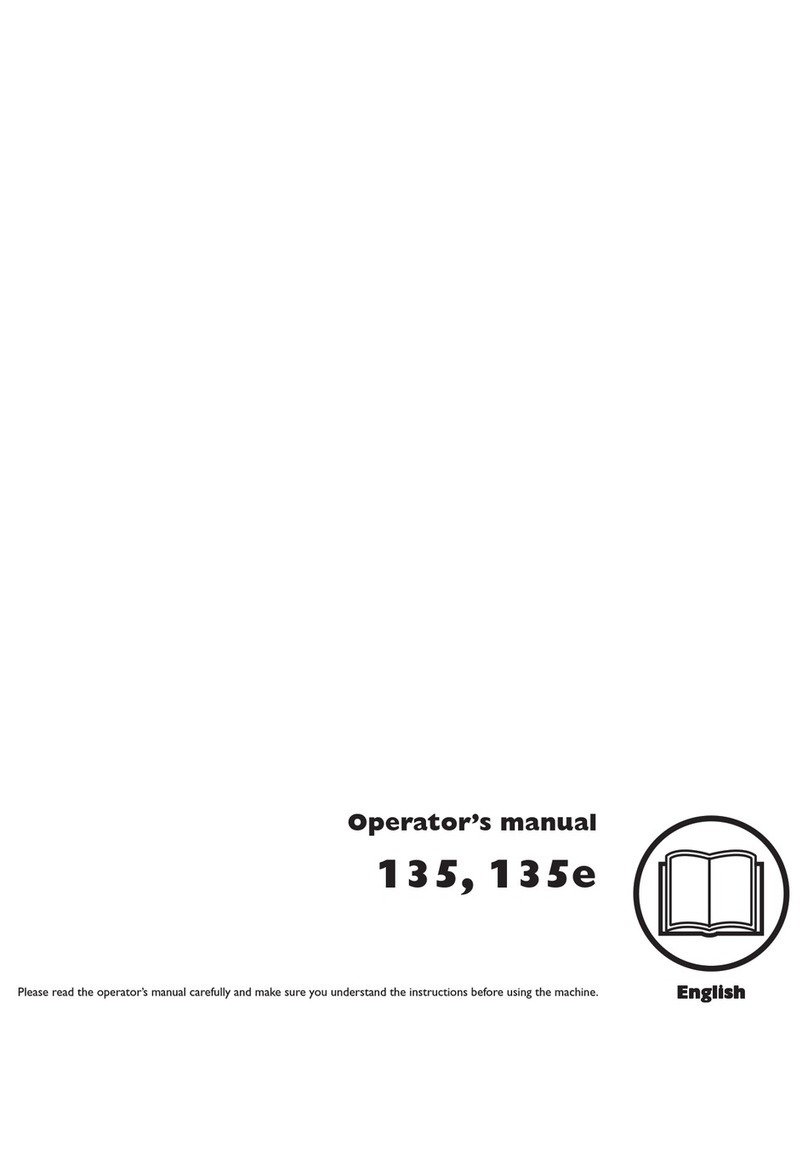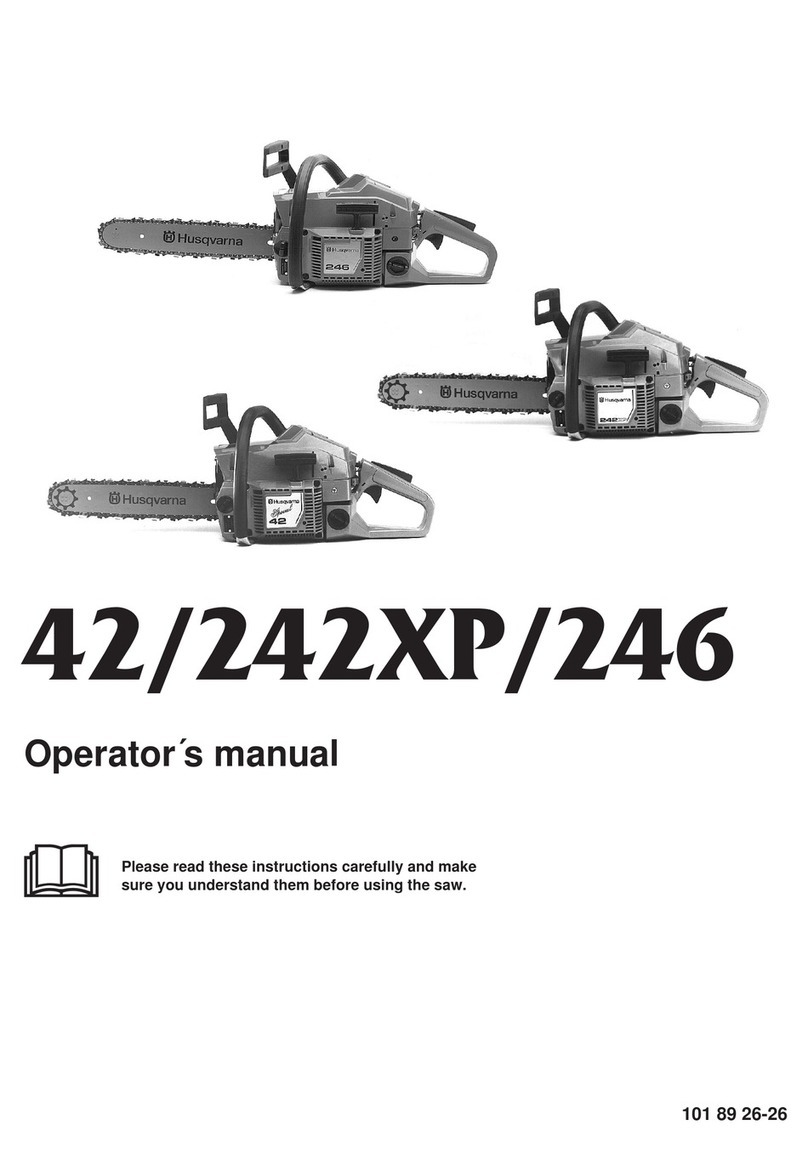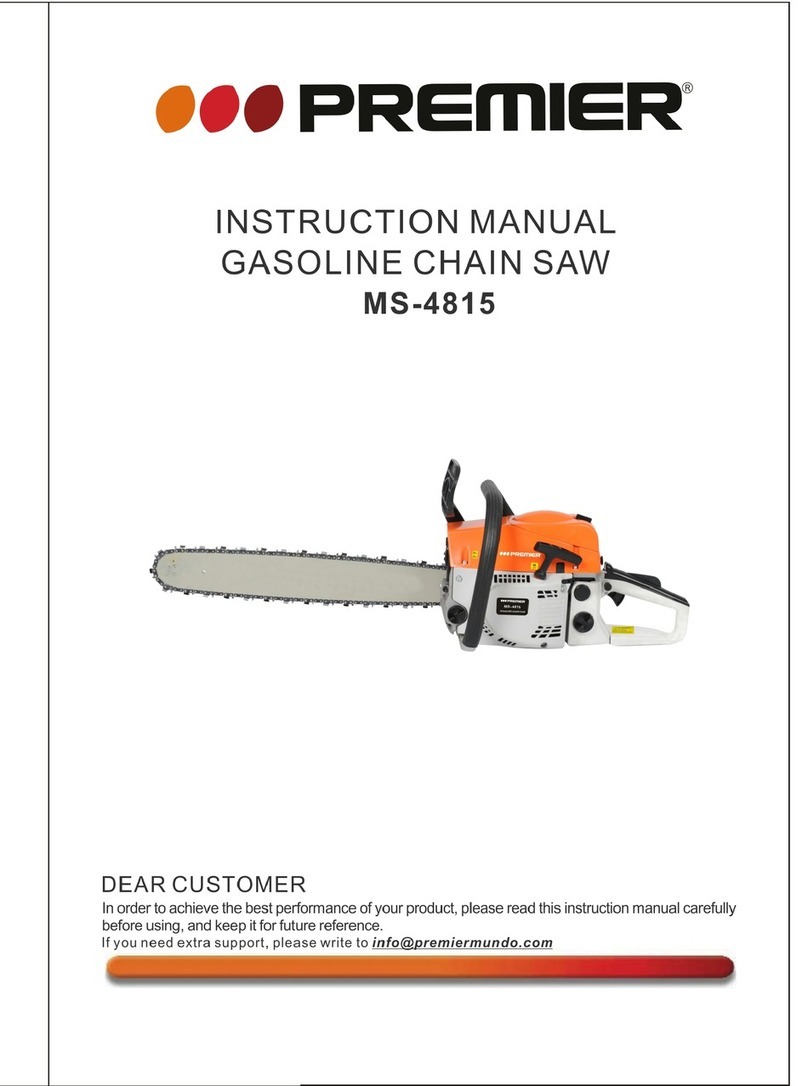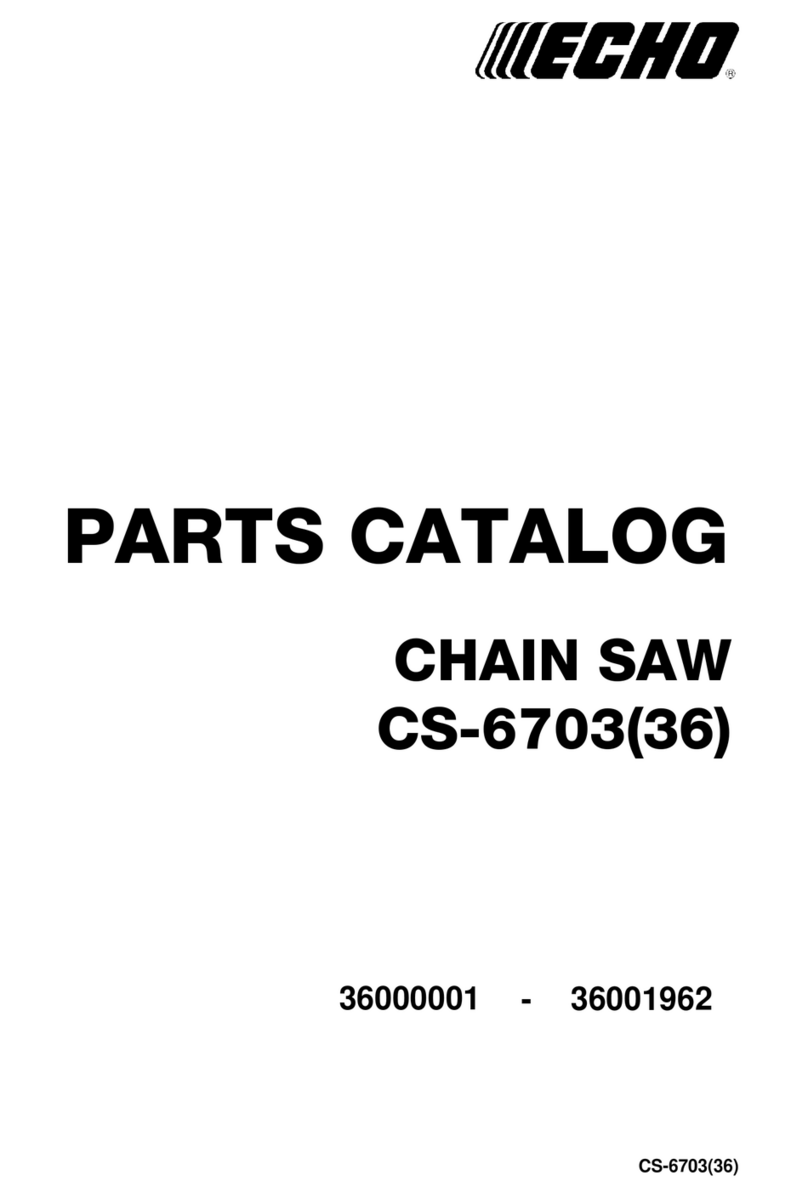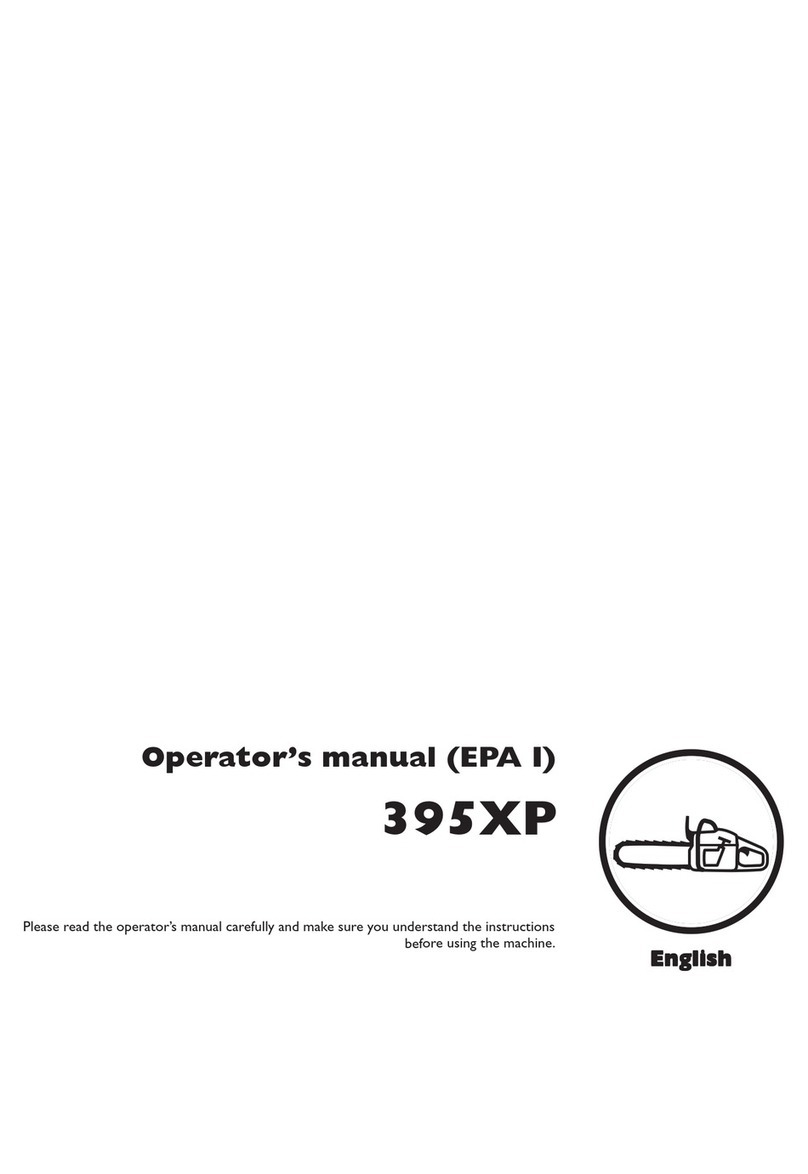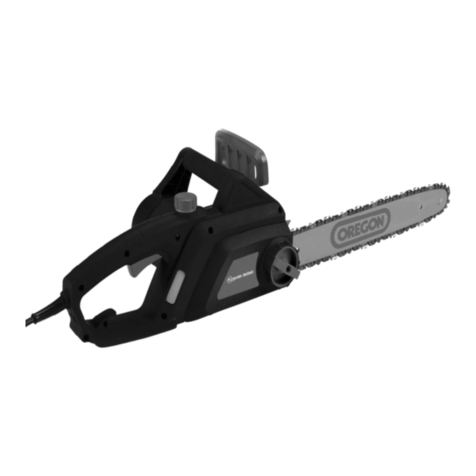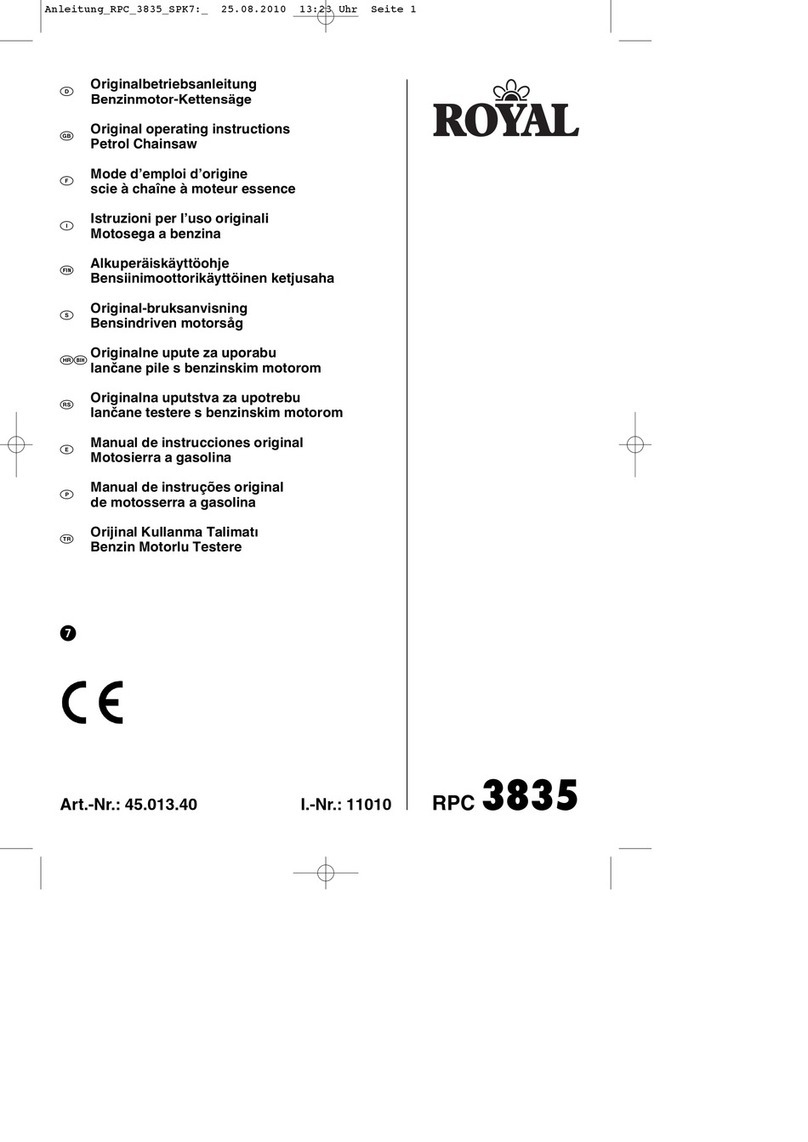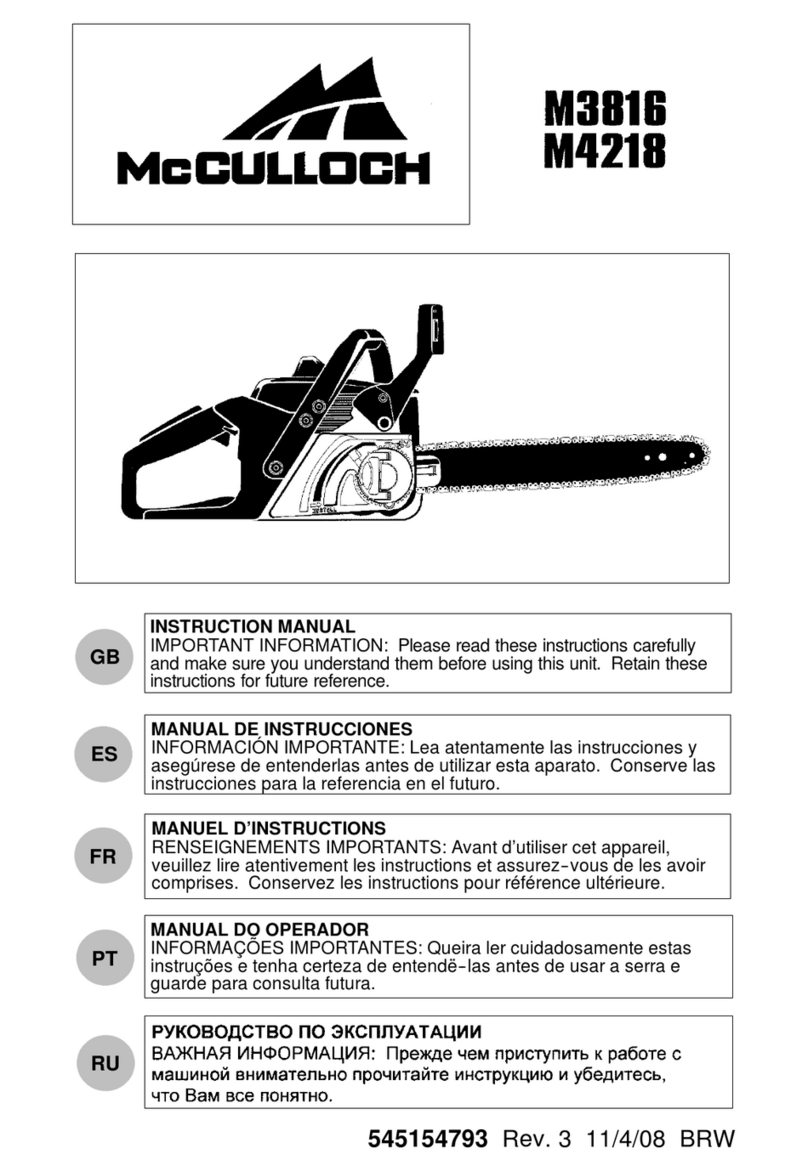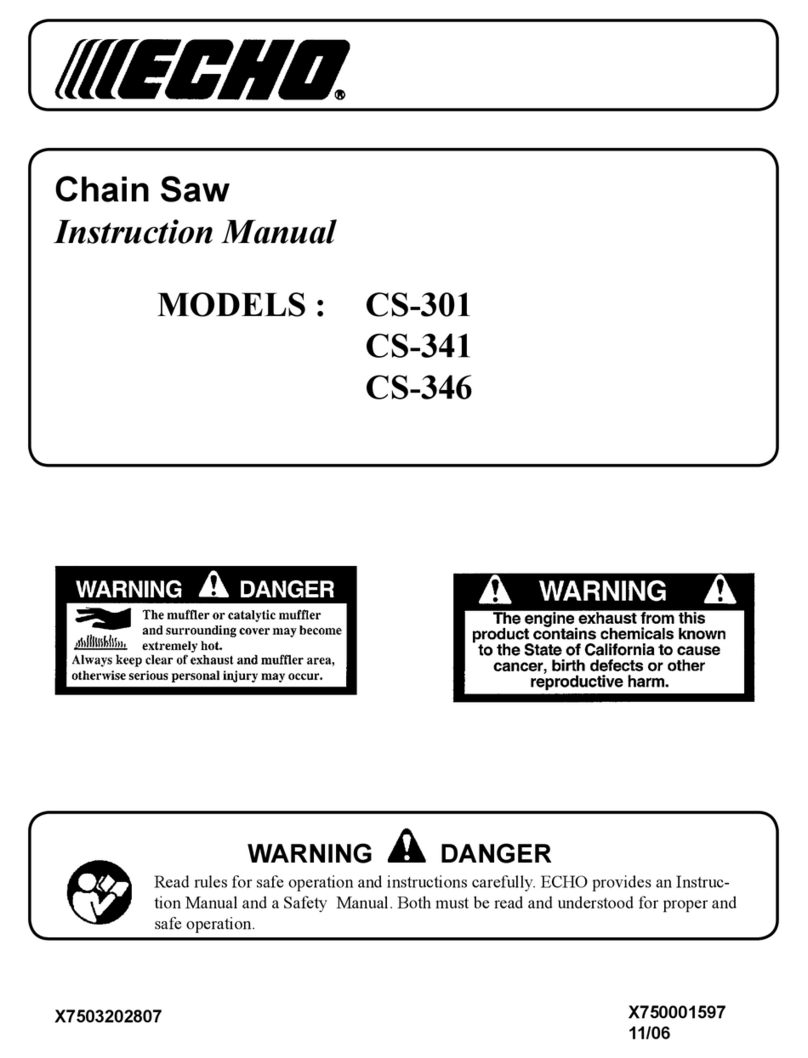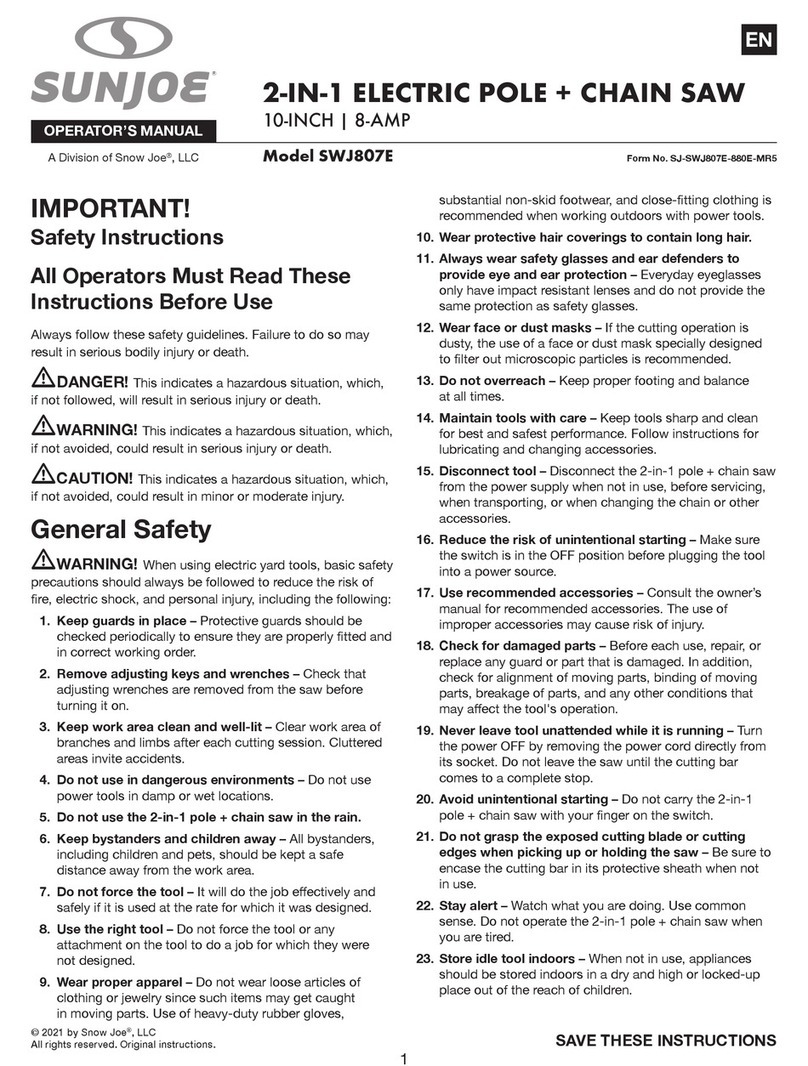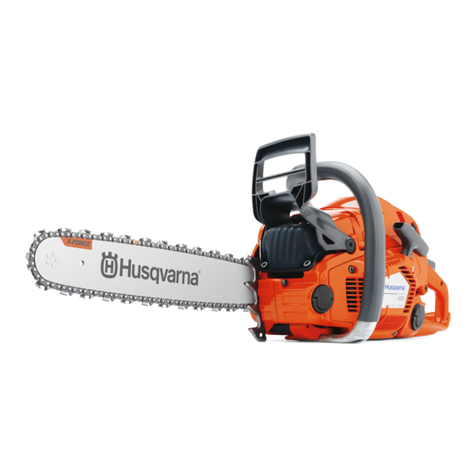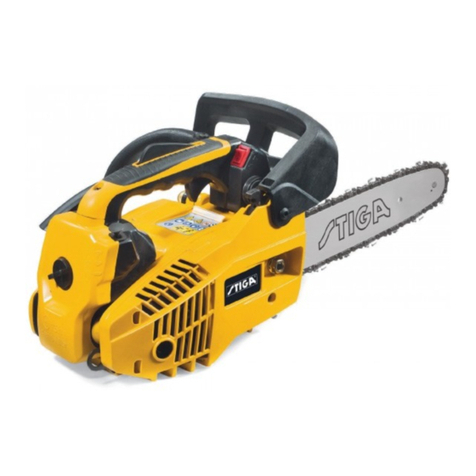English – 3
CONTENTS Contents
Key to symbols......................................................... 2
Safety instructions
Personal protective equipment ................................. 4
Chain saw safety equipment...................................... 4
Inspecting, maintaining and servicing chain saw safety
equipment............................................................................ 8
Cutting equipment ......................................................... 10
How to avoid kickback................................................. 16
General safety precautions....................................... 18
General working instructions.................................... 20
What is what?
What is what?.................................................................... 25
Assembly
Mounting guide bar and chain ........................................... 26
Fuel handling
Fuelmix.............................................................................. 27
Fuelling.............................................................................. 28
Start and stop
Start and stop .................................................................... 29
Maintenance
Carburettor ........................................................................ 30
Starter device .................................................................... 31
Air filter .............................................................................. 32
Spark plug ......................................................................... 32
Muffler................................................................................ 32
Adjustment of the oil pump................................................ 33
Cooling system .................................................................. 33
Daily maintenance............................................................. 33
Weekly maintenance ......................................................... 34
Monthly maintenance ........................................................ 34
Technical data
2033T ................................................................................ 35
Before using a new saw
• Read the instructions carefully.
• Check cutting equipment is correctly fitted and adjusted. See
page 26.
• Refuel and start the saw. Check the carburettor settings.
See pages 27-30.
• Do not use the saw until sufficient chain oil has reached the
chain, see page 14.
IMPORTANT! If the carburettor mixture is too lean it greatly
increases the risk of engine failure.
Poor maintenance of the air filter will cause carbon build-up on
the spark plug and lead to difficult starting.
If the chain is badly adjusted it will cause increased wear or
damage to the bar, drive sprocket and chain.
Under no circumstances should you modify
the original design of the chain saw without
approval from the manufacturer. Always use
genuine spare parts. Unauthorized
modifications or accessories may lead to
serious injury or death.
!
!A chain saw is a dangerous tool if used
carelessly or incorrectly and can cause
serious, even fatal injuries. It is very important
that you read and understand these
instructions.
IMPORTANT INFORMATION
This saw has been developed for tree maintenance
work and should therefore only be used by persons
who are specially trained in tree maintenance work
above ground level.
The chain saw has labels with these warning symbols.
Their meanings are explained in the “Key to symbols”
section.
